FPV antennas are the deciding factor that determine the range and signal strength of your FPV system. With so many different types of antennas on the market, it can be overwhelming to choose the right one for your specific setup. In this tutorial, we’ll cover the basics of antenna structure, the different types of antennas available, and provide you with tips on how to choose the right antenna. Whether you’re a beginner or an experienced FPV pilot, this tutorial will provide you with valuable insights on FPV antennas.
To learn more about FPV, make sure to check out our complete guide to FPV Drones.
Table of Contents
Antennas Recommendations
The following antenna recommendations work for both analog and digital systems; just make sure to get the right polarization (RHCP or LHCP). It’s suggested to use LHCP for DJI and Walksnail, as that’s recommended by the manufacturers or included with the original kit. There’s no performance difference in using the opposite polarization, as long as you use matching antennas on both the transmitting and receiving ends. Looking for antennas for the DJI FPV System? I’ll talk about that in another post.
Antennas for VTX (Video Transmitter)
XILO AXII
Budget Option

The Xilo AXII is made by GetFPV and is a good budget FPV antenna. The best thing is that it comes in all sorts of connectors (SMA, RP-SMA, MMCX, and UFL), different types of coaxial cable (hard and flexible), and polarizations (RHCP and LHCP) to suit your needs.
Get it here: https://oscarliang.com/product-7sso
Rush Cherry
Decent Performance
The Rush Cherry is a decent budget antenna. As an alternative to the XILO for buyers outside of the US, the Cherry also comes with different connectors and polarization. It has a strong case which protects the antenna in hard crashes.
Get them here:
AE: https://aliexpress.com/e/_DmaS67R
Amazon: https://amzn.to/4aNWksO
Lollipop 4+
Cheapest Worth Having
The Foxeer Lollipop might not offer the best performance, but it has decent quality for those who are on a budget and want to replace the stock dipole antennas. These antennas are very durable thanks to the thick plastic housing.
Product page:
AE: https://s.click.aliexpress.com/e/_oDZIcYd
Amazon: https://amzn.to/3Ucpn4a
RDQ: https://oscarliang.com/product-xz3d
Lumenier AXII 2
Top of the Line
The Lumenier AXII 2 is a small yet robust antenna, providing uniform signal coverage. The AXII 2 comes in various variations, including MMCX, UFL, and SMA connectors with different stem lengths, making it a versatile option that can cover most, if not all, of your needs.
GetFPV: https://oscarliang.com/product-3pwf
Amazon: https://amzn.to/3h0tWrH
RDQ: https://oscarliang.com/product-9ioz
TrueRC Matchstick
Top of the Line
The Matchstick is basically the well known Singularity with hardened case for extra durability. It boasts an impressive efficiency of 99%, combined with a near-perfect axial ratios (with cross-polar rejection of up to -30dB), which makes it excellent at rejecting multipath interference.
GetFPV: https://oscarliang.com/product-0o20
RDQ: https://oscarliang.com/product-eb2r
Foxeer Micro Lollipop
Tiny Budget Antenna For Micro Drones
Product page:
AE: https://aliexpress.com/e/_DkY1mvj
Amazon: https://amzn.to/4d42cjZ
RDQ: https://oscarliang.com/product-4ef0
TrueRC Singularity Short
Small Premium antenna for Micro Drones
Product Page:
RDQ: https://oscarliang.com/product-npd0
Amazon: https://amzn.to/4cOH018
Antennas for VRX and FPV Goggles
Lollipop (Long & Angle SMA)
Cheapest Worth Having
Using a long antenna on FPV goggles helps prevent the signal from being obstructed by pilot’s head, ensuring a clearer and more reliable connection.
AE: https://s.click.aliexpress.com/e/_DD8esWB
Makerfire: https://oscarliang.com/product-tfiw
TrueRC Singularity Stubby
If you want high-quality antennas that won’t add much bulk to your FPV goggles, the TrueRC Singularity Stubby is one of the best options out there. These antennas are omnidirectional, which means you have even coverage around yourself. However, if you tend to fly in front of yourself while standing at the edge of your flying area, a patch combo might give you better range.
RHCP for Analog
RDQ: https://oscarliang.com/product-90d9
GetFPV: https://oscarliang.com/product-husz
Amazon: https://amzn.to/4cOH018
LHCP for Digital (Walksnail and DJI)
RDQ: https://oscarliang.com/product-9n6w
GetFPV: https://oscarliang.com/product-rh9l
Amazon: https://amzn.to/4cOH018
Menace PicoPatch
Cheapest Worth Having
The Menace Pico-Patch is a very compact and affordable directional patch antenna with wide signal coverage, delivers decent performance, great for FPV drones. Check out my review of the Pico-Patch.
Get it here:
GetFPV: https://oscarliang.com/product-k6jp
RDQ: https://oscarliang.com/product-9imj
TrueRC X-Air MKII
Top of the Line
This is the antenna to go for if you want a high gain directional antenna for long range, it provides a 10dB gain and yet giving you 120 beam-width.
For Analog (RHCP):
GetFPV: https://oscarliang.com/product-khsf
Amazon: https://amzn.to/4arnfLz
RDQ: https://oscarliang.com/product-qsct
For Digital (Walksnail and DJI):
GetFPV: https://oscarliang.com/product-d9e0
Amazon: https://amzn.to/3vTsGDJ
RDQ: https://oscarliang.com/product-c724
VAS Crosshair XTREME Mini
Top of the Line
The VAS Crosshair XTREME Mini is another high-quality directional antenna that doesn’t look bulky on your slimline FPV goggles. On paper, it has similar specs to the X-Air MKII in terms of gain and beam-width. However, the XTREME is a Crosshair antenna and should have better efficiency than a patch antenna on paper. It also has a near-perfect axial ratio, which means it can reject multipath distortion better.
Amazon: https://amzn.to/44ERBIk
GetFPV: https://oscarliang.com/product-ruur
RDQ: https://oscarliang.com/product-voo4
What is FPV Antenna
FPV antenna is responsible for transmitting the video feed from the drone’s camera to the pilot’s goggles or monitor in real-time, allowing the pilot to fly the drone while seeing what the drone sees. The quality, performance and configuration of your FPV antennas play a critical role in determining the range, clarity, and reliability of the video transmission.
FPV Antenna Anatomy
An antenna is simply a piece or pieces of wire that convert electrical signal into electromagnetic waves, and vice versa. Regardless of design or external appearance, every antenna consists of the same basic parts:
- Element: The conductive material that transfers and receives electromagnetic waves.
- Ground Plane: The ground plane of the antenna is tied to the electrical ground of the device. It is also made of conductive metal and serves as an electrical reference for the state of the element. A properly tuned ground plane can amplify the radio signal emitted or received by the element of any antenna.
- Coaxial Cable: A special type of shielded wire that carries signal between the connector and antenna element without emitting radio signals. They are used to extend the length of the antenna and often made of rigid material. Coaxial cables are not necessary if the connector is directly connected to the element.
- Connector – The connector of the antenna is what physically connects the element and ground plane to the video transmitter and receiver.
- Connector: The physical connection between the antenna and video transmitter/receiver.
FPV antenna elements are often made of fragile copper wires and are commonly housed in plastic protective casing. These cases do not weaken the signal and provide support for the antenna during crashes.
Antenna Directionality
When choosing an antenna, the most basic decision is its directionality, which can be either directional or omni-directional.
Omni-directional antennas radiate radio waves equally in all directions, while directional antennas focus their radio waves to one direction.
One classic analogy is bulb vs torch, where the bulb is Omni-directional and the torch is directional. If both light sources are operating at the same power, torch can reach further because it focus the light in one direction, but in the expense of narrower beam width.
Omnidirectional antennas are great for everyday flying and provide good signal coverage all around the pilot. Directional antennas are often used on diversity receivers, where they can be paired with an omni-directional or multiple directional antennas to cover all necessary angles.
Diversity receiver can receive two signals from two antennas and display the stronger signal.
Antenna Polarization
Antenna polarization is a classification of FPV antennas. There are two types:
- linearly polarized antennas (LP)
- circularly polarized antennas (CP)
And within circular polarized antennas you have
- left hand circular polarized antennas (LHCP)
- right hand circular polarized antennas (RHCP)
Linear Polarization
Linear polarization is used in many basic antennas, such as the dipole antennas (a.k.a. rubber duck antennas) that come with your VTX and VRX, or even in your home WiFi.
With linear polarization, the signal oscillates either horizontally or vertically in a single plane as it travels.
Circular Polarization
Skew-Planar Wheel, Cloverleaf, and helical antennas are examples of common circularly polarized antennas.
Circular polarization involves transmitting signals on both horizontal and vertical planes with a 90-degree phase shift that looks like a spinning corkscrew.
However, circular polarization has an important consideration: the direction of the radio waves is “spun.” There are only two directions: right-hand circularly polarized (RHCP) and left-hand circularly polarized (LHCP). If you transmit a radio wave with one antenna, you need to receive that wave with another antenna with the same spin. Therefore, you should use RHCP antennas on your receiver only if your transmitter also has an RHCP antenna, and the same is true for LHCP. Failing to do so will result in a significant loss of signal.
Which Antenna Polarization is Best for FPV Drone?
Circular polarized antennas are generally considered to be better suited for FPV drones for the following reasons:
- Linear polarized antennas are much more susceptible to multipath interference compared to CP antennas.
- LP antenna range is greatly affected by antenna alignment, and it is almost impossible to maintain good antenna alignment on a quadcopter all the time as it is constantly rotating around all axes.
Linear polarized antennas are widely used due to their structural simplicity. They tend to be smaller, lighter, cheaper, and easier to make. In general, linear polarization is a good choice for long-range as all the energy is focused on a single plane. However, the range advantage is seldom realized due to multipath interference.
To achieve the best reception, both transmitting and receiving ends should use linear polarized antennas, and they have to be aligned to ensure maximum radiation overlap. FPV drones are constantly rotating around all 3 axes, making it almost impossible to maintain perfect alignment. For example, when the transmitter and receiver antennas are at 90 degrees to each other, they will have the least amount of signal overlap, resulting in over 20dB loss in signal strength (over 90% reduction in range), referred to as cross-polarization. LP antennas may be more suited for RC planes, cars, boats, etc.
On the other hand, circular polarized signals always overlap no matter what orientation or angle your FPV drone is at relative to your receiving antenna (no signal loss regardless of the antenna’s alignment). For this reason, circular polarized antennas are the standard for FPV drones.
Another advantage of circular polarized antennas is their ability to reject multipath interference. Multipath interference is a form of noise in your analog video feed that often appears as random color changes, static, scrambled image, and drop-outs. It happens when the signal bounces off objects (such as walls and ground), gets distorted with phase delay, and interferes with the main signal.
For general FPV drone flying, it is recommended to use CP antennas. However, some pilots might prefer specially made LP antennas because they can be made smaller, lighter, and more durable, despite their worse RF performance.
When to use CP antennas
- When flying close to large objects such as trees, buildings, or in enclosed environments such as car parks and stadiums where there will be a considerable amount of multipathing interference.
- During acrobatic flying where the aircraft’s orientation and angle are constantly changing.
- During low altitude flying (proximity flying).
When to use LP antennas
- During steady straight-line flying without much roll and pitch movement.
- When antenna size, weight, and durability are the most important considerations.
Can you use LP and CP antennas together?
You can mix linearly polarized antennas and circularly polarized antennas in your FPV system, at the cost of some signal loss. It’s not unheard of for some racers to use a dipole antenna on the drone for weight saving and durability while using a circular antenna on the video receiver. You will suffer from a signal loss of about 3dB (50% power loss), it’s bad for long range, but it’s not the end of the world for short-range flying such as racing. RHCP/LHCP doesn’t matter in this case. But it’s still better than the worst situation when using only linearly polarized antennas on both ends, where the maximum reduction in signal is -30dB (1/1000). It’s a compromise between performance and durability.
For ordinary FPV pilots, I still recommend using only CP antennas.
Differences between LHCP and RHCP
Circular polarized antennas are either left-hand (LHCP) or right-hand (RHCP). Transmitter and receiver should have matching antennas otherwise it could result in significant signal loss. If you mix LHCP and RHCP antennas, they will still work but your range is greatly reduced.
This is because LHCP antenna rejects signal from RHCP antenna and vice versa. How much it rejects depends on the Axial Ratio of the antennas.
CP antennas can benefit from this property against multipathing. Every time a CP signal bounces off object it changes its polarization direction. And LHCP antenna rejects RHCP signal and vice versa (cross polarization). Also when one pilot is using LHCP antennas and the other using RHCP, there will be less interference between them.
Therefore you are supposed to use the same type of antenna on both receiver and transmitter. If you mix LHCP and RHCP you will suffer from significant signal loss.
For pilots flying in a group, it’s best to have both LHCP and RHCP antennas for flexibility. If you are just flying alone most of the time, then this doesn’t really matter, both LHCP and RHCP have the same performance. RHCP antennas are more common for analog FPV system, while LHCP is more common for digital FPV systems such as DJI and Avatar.
Antenna Performance
When it comes to FPV antenna design, there are several performance measurements to consider, including:
- Gain
- Radiation Pattern
- Axial ratio
- SWR
- Efficiency
- Frequency tuning and range
- Impedance
Personally, I focus on the first four factors when selecting antennas. However, if you’re buying from a reputable brand, you shouldn’t have to worry too much about these details. After all, we’re not building rockets for NASA here, so there’s no need to give yourself a headache!
If you’re interested in learning more about these concepts, there are plenty of great resources available, such as antenna-theory.com and Wikipedia’s antenna page . In the following sections, I’ll provide a brief explanation of what each term means.
Antenna Gain
Antenna gain is an indicator of a directional antenna’s range and angle of coverage. It is a measure of how much more power an antenna can radiate in a particular direction compared to an isotropic radiator (a theoretical antenna that radiates equally in all directions). Antenna gain is expressed in decibels, or dB.
Higher gain generally means a further range but generally has more directivity and a narrower beam width. Antenna gain can alter the radiation pattern, which can be found in the antenna’s datasheet. For VTX antennas, typically you want to use lower gain, omni-directional antennas so that you get better coverage in all directions around the drone. For VRX antennas, you want to use a combination of low gain omni-directional antenna and mid/high gain directional antenna to get the best of both worlds. If you don’t fly long range, it’s also okay to just use low gain omni-directional antennas on your video receiver.
For more detail: How antenna gain affects range?
When dealing with decibels, it is helpful to remember that every 3dB gain you get from your antenna is equivalent to doubling the power of your transmitter. For example, if you can achieve a 6dB gain by swapping to a new antenna with a 200mW video transmitter, it is equivalent to moving to an 800mW video transmitter, and that can give you double the range! (6dB = 3dB + 3dB = two doublings = 4x, 200mW x 4 = 800mW). I have an in-depth tutorial explaining how to use dB for FPV.
Radiation Pattern
The radiation pattern emitted by your antenna is represented by two charts: one looking down on the antenna, and the other looking from the side. These charts can tell you where the weak spots are.
Here is an example of an antenna with 0 dB gain. As you can see, it’s truly omni-directional and has a nearly perfect spherical radiation pattern.
However, omni-directional antennas in real life usually have weak spots at the top and bottom, and the 3D radiation pattern would look more like a doughnut shape. In a two-dimensional view, it forms a figure-eight pattern in the vertical plane, and a circle in the horizontal plane.
This demonstrates an important point when flying your drone at high altitudes – don’t fly over yourself! The top of the radiation pattern is the area where the gain is weakest, and you have a high likelihood of losing signal.
Here are the radiation charts for an 8dB gain patch antenna. Notice the narrow beam width in both vertical and horizontal planes.
Low dB gain might seem less appealing in terms of range, but it can offer more reliable performance thanks to the more spherical radiation pattern. You can get reasonably strong signals even by pointing the antenna straight at the receiver.
Axial Ratio
In reality, there is no perfect circular polarized antenna. For example, an RHCP antenna might output 90% of RHCP signal with 10% LHCP signal. So there might still be interference even if you were doing everything perfectly. And axial ratio is used to measure this antenna property.
In FPV terms, this is the measurement of how susceptible the antenna is to multipath interference. Antennas with better capabilities of rejecting multipath interference make it easier to fly in areas with lots of concrete and metal.
A perfect circularly polarized antenna would have an axial ratio of 1, while antennas with axial ratios closer to 1 have a greater ability to reject multipath interference.
Frequency and Bandwidth
Antennas are tuned for a specific frequency or frequency range. For example, on a dipole antenna, the tuned frequency can be determined by the length of the active element. The antenna would have the best performance when transmitting and receiving at this frequency.
If you transmit or receive at a slightly higher or lower frequency, the antenna would still have acceptable performance, and this “acceptable range” is the bandwidth. Outside of the bandwidth, signal strength is greatly reduced or even rejected.
You should understand what frequency your antenna is tuned for, and what the bandwidth is, in order to select the most effective channel/frequency to use. Otherwise you will be more likely to get interference and lose picture. An antenna with a wider frequency range will work well with more FPV channels, while a narrower frequency range will be less likely to get interference, so there are pros and cons.
It can even cause overheat and damage to the video transmitter, because sending power into an unmatched antenna can reflect power back where it can build up as heat.
Anyway, for FPV most antennas designed for 5.8GHz should be fine for all the channels in A, B, E, F and R bands, unless it’s stated otherwise in the product specifications.
SWR
SWR, or VSWR, stands for “(Voltage) Standing Wave Ratio”, which refers to how much power is bounced back to the source.
With a SWR of 1, 100% of the energy is transmitted through the antenna without any loss. However, in the real world, antennas inevitably have some loss. High-frequency antennas demand exceptionally precise construction (e.g., 0.1mm accuracy) and are highly sensitive to the building materials used, including the type of solder and plastic. Some well-designed antennas, such as the Pagoda, offer greater tolerance hence they tend to have fairly low SWR across the board.
At a SWR of 2, the through power is about 89%, 11% gets bounced back to the transmitter, so a SWR below 2 is considered a decently performing antenna.
When an antenna is used for transmitting, a high SWR can cause the transmitter to overheat, potentially damage the radio when powered for an extended period of time. Conversely, if the antenna is for receiving, a high SWR won’t harm the receiver, but may degrade signal reception.
Note that SWR changes with frequency, when talking about the “tuning of an antenna”, it means the frequency at which it has the lowest SWR. Since we use the 5.8GHz band for FPV, we only care about the SWR value between 5645MHz (5.645GHz) and 5945MHz (5.945GHz) frequency range.
SWR measurement is not necessary a measure to compare if one antenna is better than another, but rather a good tool to determine if an antenna is suitable for the intended frequency range, and help you decide the best channel to use.
Further Readings:
- I tested a bunch of antennas and posted their SWR charts here: https://oscarliang.com/fpv-antenna-swr/
- Pick up a LiteVNA and test antenna SWR at home: https://oscarliang.com/litevna-measure-antenna-swr/
Antenna Efficiency
While VSWR is important, it’s not the only factor that affects antenna performance. Antenna efficiency is just as crucial. Efficiency refers to the amount of energy that reaches the antenna that is then radiated as RF energy.
For example, let’s consider two antenna choices for a 100mW VTX.
- Antenna A has an SWR of 1.2:1 (99.2%) and a radiation efficiency of 80%.
- Antenna B has an SWR of 2.0:1 (88.9%) and a radiation efficiency of 90%.
Even though Antenna B lets in less power due to the higher SWR, it actually radiates away more energy (80.01mW) than Antenna A (79.36mW) because it’s more efficient. This shows that an antenna with a higher SWR but higher efficiency could provide better performance overall.
Types of Antennas
We have covered almost all the basics of FPV antenna, now let me introduce the different types of antennas that are commonly used in FPV.
| Omni-directional | Directional | |
| Linear Polarization | Monopole, Dipole | Patch |
| Circular Polarization | Cloverleaf, Pagoda | Helical, Patch, Crosshair |
Monopole Antenna
Summary:
- Type: Omni-directional Linear
- Applications: Radio control transmitters and receivers
A monopole antenna is the simplest form of antenna, consisting of an unshielded solid wire that acts as the antenna element. It is very common in radio receivers due to its low cost and ease of repair. However, it is not as effective as dipole antennas. The length of the exposed wire is crucial as it determines the resonant frequency at which it can pick up signals.”
Tutorial: how to make Monopole antenna.
Dipole Antenna
Summary:
- Type: Omni-directional Linear
- Applications: Radio control transmitters and receivers, video transmitters
Many radio and video equipment come with a dipole antenna. They are lightweight and can be made very durable against crashes.
Also known as “rubber duck antenna”, a dipole antenna has a simple design, consisting of two equal-length elements that are perpendicular to each other, typically in a straight line. One element is the radiating element, while the other serves as a ground plane. The dipole antenna has slightly higher gain than a monopole antenna at the expense of reduced effectiveness of the antenna’s vertical performance.
Cloverleaf Antennas
Summary:
- Type: Omni-directional Circular
- Applications: Video transmitter and receiver antennas
The cloverleaf and skew-planar wheel have been the most common antennas for mini quad FPV. Cloverleaf has 3 lobes while skew-planar wheel has 4 lobes.
These antennas are omni-directional like dipole. Circularly polarized antennas provide fantastic performance regardless of their orientation relative to one another. They are also less susceptible to multi-pathing, so you can fly around walls and trees with better video quality.
They are however relatively fragile therefore often come in different cases and protection. They are sometimes called “mushroom antenna” because of the shape of the protective housing.
Pagoda Antenna
Summary:
- Type: Omni-directional Circular
- Applications: Video transmitter and receiver antennas
Pagoda is a relatively new antenna design in the FPV scene, released in 2016. It’s an omni-directional circular polarized antenna often used on VTX. The unique design and use of materials (PCB) make it very durable. It’s relatively easy to make and so is very popular among DIY’ers as well.
Cheaper to manufacturer as you can print them on circuit boards and their quality would be roughly the same. However less efficient because of the material used has the wrong impedence (e.g. using fibre glass as dielectric), so you might get lower RSSI than antennas of identical specs that uses wires (using air as dieletric).
It’s cheaper to manufacture as you can print them on circuit boards, and their quality would be roughly the same. However, they are less efficient because they use fiberglass instead of air as a dielectric, so you might get lower RSSI than antennas of identical specs that use wires.
See our discussion on Pagoda antennas for more detail.
Helical Antenna
Summary:
- Type: Directional Circular
- Applications: Video receivers
Helical antennas are spring-shaped directional antennas, they are great for preventing multi-path interference because they are circular polarized.
The number of turns of coil determines the gain of the antenna. Helical antennas with just a couple of turns can have performance comparable to a typical patch antenna. Adding 6+ turns can increase the range by orders of magnitude. However, with every turn added, there’s a trade off in efficiency, generally when it gets to 15 turns or more, there’s very little additional gain. The more turns on a helical antenna, the higher gain it becomes. Size wise, they are not as compact as the patch antenna.
For example this is a 7-turn 5.8GHz 12dbi Helical antenna.
Patch antenna
Summary:
- Type: Directional Linear or Circular
- Applications: Radio control transmitters and video receivers
Patch antennas are directional antennas on a printed circuit board that can be found in both linear and circular polarization. Patch antennas are light weight and compact solution compared to helical.
They are relatively inexpensive to manufacture as they can be printed on circuit boards, but their efficiency is inherently lower than that of other types of antennas that use air as dielectric, such as the helical antenna.
Patch antennas generally have less directionality than helical antennas and have a smaller footprint.
Here’s an example of what a patch antenna looks like inside.
Crosshair antenna
Summary:
- Type: Directional Circular
- Applications: Video receivers
The crosshair antenna has an active element at a certain distance away from a massive backplate. However, the elements and backplate are separated by an air gap dielectric instead of fibre glass like patch antennas, offering better efficiency.
Considerations in Choosing Antenna for FPV
For beginners, it’s best to start with omni-directional circularly polarized antennas.
Antenna performance relies heavily on decent material and precision, good antennas would therefore cost more. However some top notch antennas can cost 2 to 3 times more than the cheaper ones, while they might only give you 5% or 10% more range.
Axial ratio is also an important factor to consider, which isn’t normally mentioned by manufacturer. But you might be able to find out their performance from reviews online.
Ultimately, the best antenna for you will depend on your budget and research on products.
If you have a diversity receiver, consider pairing an omni-directional antenna with a directional antenna to improve signal quality and range.
Receiver Antennas vs. Transmitter Antennas
Antennas are made for receiving, transmitting, or both. It’s important to choose the right antenna for each job.
For reliable performance, you should only use an omnidirectional antenna on the video transmitter. This is because FPV drone is always moving and rotating, and it would be impossible to keep a directional antenna aimed at the pilot’s video receiver.
You can use a highly directional antenna on your video receiver since you can point your antenna at certain direction. When you have a diversity receiver on your goggles, you can combine both directional and omni-directional antennas to get the best of both worlds.
Antenna Connector Types
The most common types of connectors used in FPV are: SMA, MMCX, and U.FL. You can check out this article to learn more about the difference between these connectors in detail: https://oscarliang.com/fpv-antenna-connectors/. Below I will provide a summary of the differences.
SMA & RP-SMA
In FPV, the most common antenna connectors are SMA and RP-SMA. While they may look similar, they are not compatible with each other due to differences in their center pin design. There’s no performance difference between the two, but mismatching them can result in poor performance, or even hardware damage. Make sure to check what connector your VTX uses before purchasing antenna.
U.FL (IPEX/IPX)
U.FL connectors (also known as IPEX or IPX) have become increasingly popular in recent years thanks to their compact size and lightweight design—perfect for micro drones and tight builds.
However, U.FL connectors are:
- Fragile
- Have limited mating cycles (they wear out quickly if plugged/unplugged too often)
Most modern FPV gear using U.FL is based on the 1st-generation IPEX connector, which has a 2.0 mm diameter. Be aware that newer generations like IPEX3 (1.4 mm) and IPEX4 (1.5 mm) exist but are not compatible with the standard U.FL (IPEX 1) used in most FPV equipment.
MMCX
MMCX connectors are a newer option gaining popularity in VTX and antenna setups. They offer a great balance between the sturdiness of SMA and the compactness of U.FL.
Benefits of MMCX connectors:
- Stronger than U.FL
- Higher mating cycle count (can be connected/disconnected many more times)
- Rotatable design reduces cable strain
- Smaller and lighter than SMA
Durability
When choosing FPV antenna for FPV drones it’s important to consider its durability. The antenna is mounted externally, it is prone to damage and will likely experience many crashes during its lifetime. Therefore, it’s important to choose an antenna that can withstand the inevitable abuse it will take, especially if you crash often. Consider how robust and durable the antenna is when making your decision, pick one that comes with strong protective housing.
Weight
One thing people usually overlook is the size and weight of the antenna. It’s becoming more important as mini quads are getting lighter and lighter. Every gram you save can improve the performance of your quad.
The size and weight of an antenna are often overlooked, but they are becoming increasingly important as FPV drones are becoming lighter. Saving even a few grams can improve your quad’s performance and flight time. Therefore, it’s important to take the weight of the antenna into consideration when selecting one for your mini quad.
How to Mount VTX Antenna?
When mounting your VTX (video transmitter) antenna, the most important thing is to keep it away from any conductive materials. This is because those materials can block or absorb radio waves, which will weaken your signal.
It’s also important to use a rigid antenna, since a longer antenna can create vibrations during flight that make it harder to tune your drone or cause more noise.
The best orientation for your VTX antenna depends on your flying style. If you spend most of your time cruising, your quadcopter may be tilted forward 20 to 30 degrees. By mounting your antenna tilted back, it makes sure it’s pointing vertically during flight which is the optimal antenna position.
For racing drones, VTX antennas are often mounted inside a 3D printed TPU mount for protection. However, this may not be the best choice for long-range flying.
I have a whole article discussing about antenna placement in more detail.
How to Mount Video Receiver Antenna?
Mounting the video receiver antenna requires consideration of the type of setup you have. For a single antenna receiver, a circular polarized omni-directional antenna is recommended, while a directional and an omni-directional antenna are suggested for diversity setups for overall better performance.
For long-range flying, it’s a common practice to have your video receiver module on a ground station to prevent unexpected changes in antenna orientation due to body movements. A spotter can also help adjust the patch antenna to ensure it’s pointing in the right direction. If you have the patch antenna on your goggles, you can try moving your head to point it at your model when the signal gets weak.
Using SMA Adapters
You can use adapters to convert between different connectors (RP-SMA, SMA, MMCX, U.FL, etc.). These adapters even come with 45-degree or 90-degree angles if you want to point the antenna at a certain position. However, there will be some signal loss when using any adapters or extension coax cables. Typically, straight adapters have around 0.1-0.2dB loss, 45-degree adapter results in around 0.2-0.5dB losses while a right angle adapter results in 0.5-1dB loses.
Sometimes the benefits of using an adapter or extension outweigh the small signal loss. For example, you can use an extension coax wire to increase the separation between the VTX antenna and radio receiver or other sources of interference. Or you can use a 45-degree adapter to optimize your video receiver antenna orientation.
Avoid Bending Antenna Cable
Bending your antenna cable can result in signal loss, typically at 90-degree the loss can be around 0.3dB or more. Try not to keep the antenna and cable straight if possible, or keep the bend radius at a minimal.
Covering Antennas
It’s a common practice in racing to cover antennas with 3D printed parts or heatshrink tubes for protection, however that might have an effect on antenna performance – i.e. shifting its tuned frequency (tends to shift lower), sometimes even results in signal loss (up to 2dB or more). If you don’t have the equipment to manage this frequency shift, it could be quite a bit of an unknown so it’s probably best to avoid covering your antennas with heatshrink, TPU or PLA if you prioritise video signal over protection.
DIY FPV Antenna
Making your own FPV antenna may seem daunting, but it can be a cost-effective option. You don’t need to fully understand antenna design to make a good one – the materials are cheap and readily available. All you need is some coaxial cable, copper wire, and plastic supports, and to follow a simple recipe while being precise in your measurements.
Try to use RG402 cables which is way better than RG316 (i.e. less loses for FPV use). Some coaxial cables are designed for other frequencies and could be extremely lossy for 5.8GHz FPV applications.
However, keep in mind that making a high-performing antenna requires a lot of precision, and even small errors can significantly impact its effectiveness. If you’re looking for top-notch performance, it’s best to buy antennas from reputable vendors.
- My first attempt at making cloverleaf antennas from scratch: https://oscarliang.com/make-diy-cloverleaf-antenna/
- Pagoda assembly video: https://www.youtube.com/watch?v=49rRR8iEiKc
- DIY Helical by IBCrazy: https://www.rcgroups.com/….Circularly-Polarized-Helical-antenna…
Conclusion
So that covers some of basics and considerations in choosing your 5.8GHz FPV antenna, and some antenna recommendations for FPV flying. I hope this guide has helped you to choose the best FPV antenna for your mini quad!
Edit History
- 2017 – Article Created.
- 2018 – Updated “Antenna Recommendations” and Added info about “Antenna Frequency”.
- 2019 – added info about SWR, adapters and extension cables.
- 2020 – updated recommendations.
- 2022 – updated products, added detail about how to mount VTX/VRX antennas.
- 2023 – updated tutorial.
- 2024 – Updated recommendations and info regarding SWR.
- Mar 2025 – Updated product links.
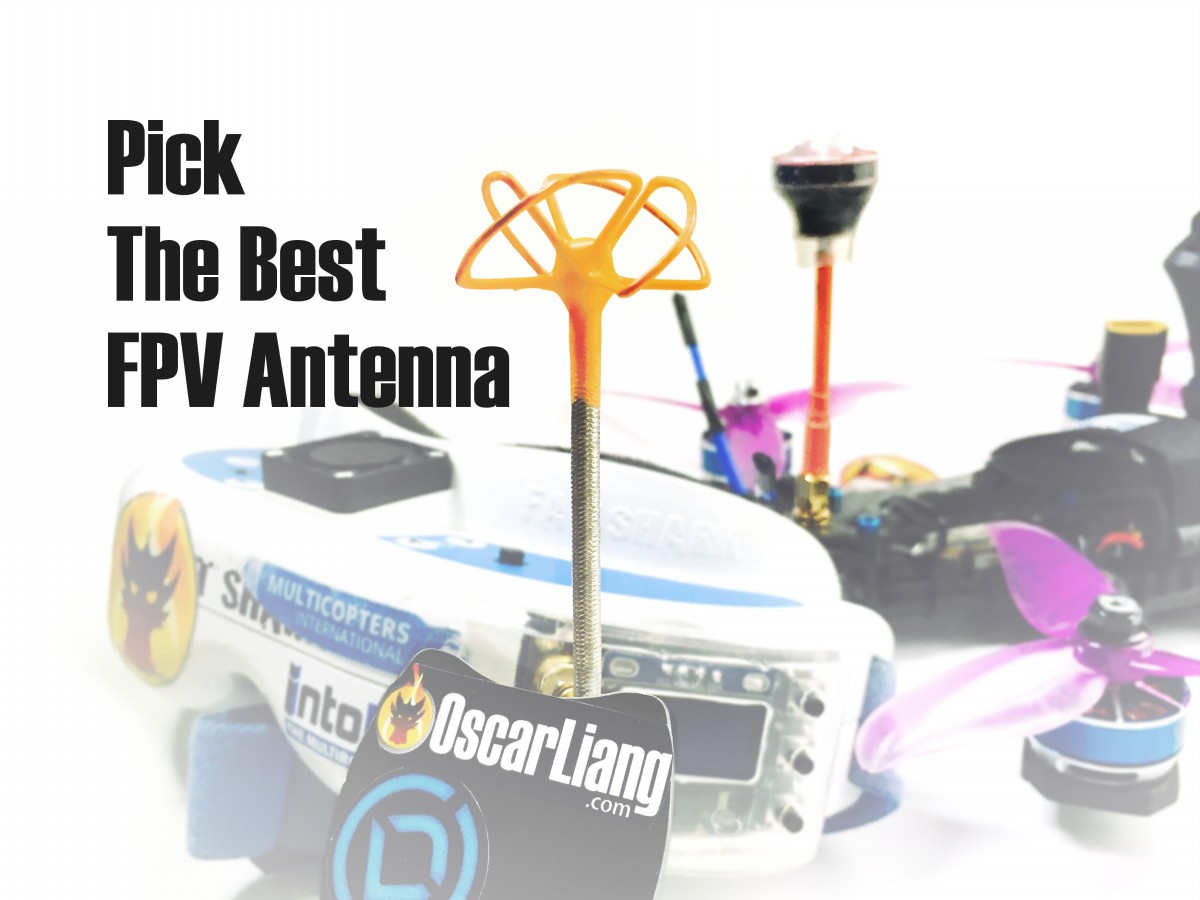












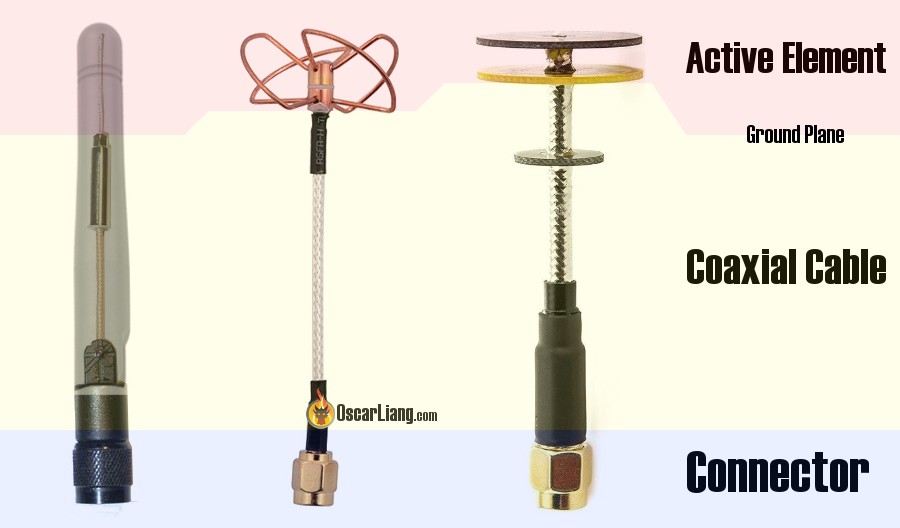
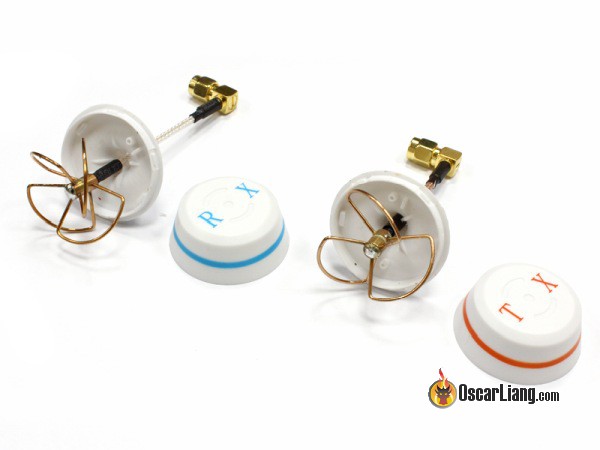
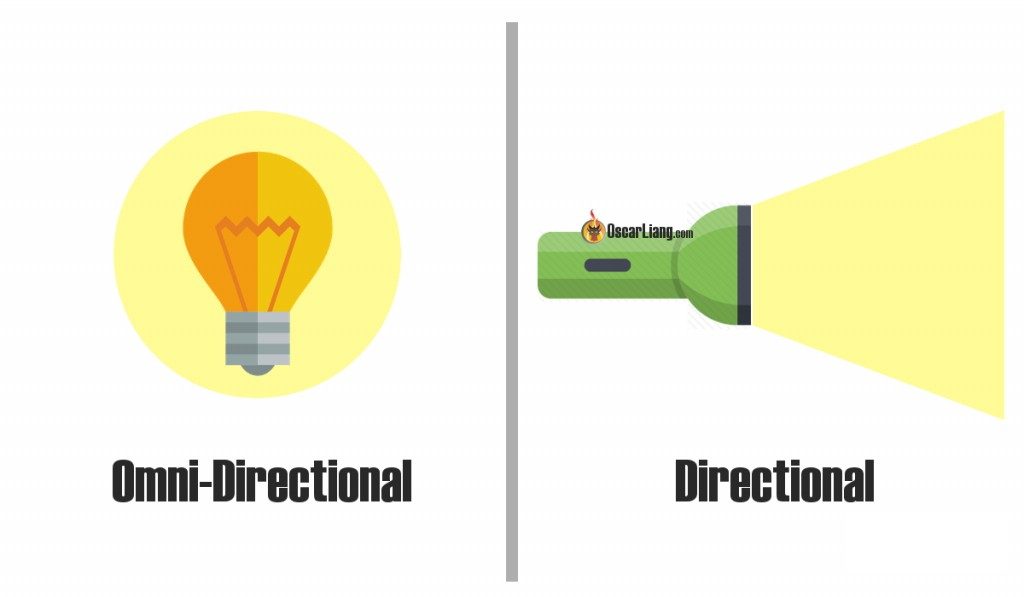
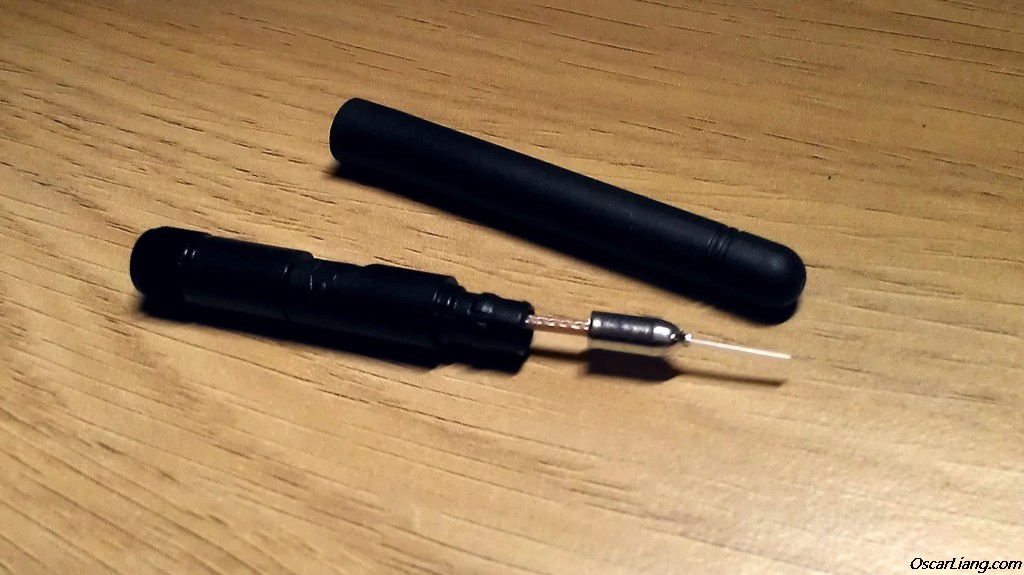

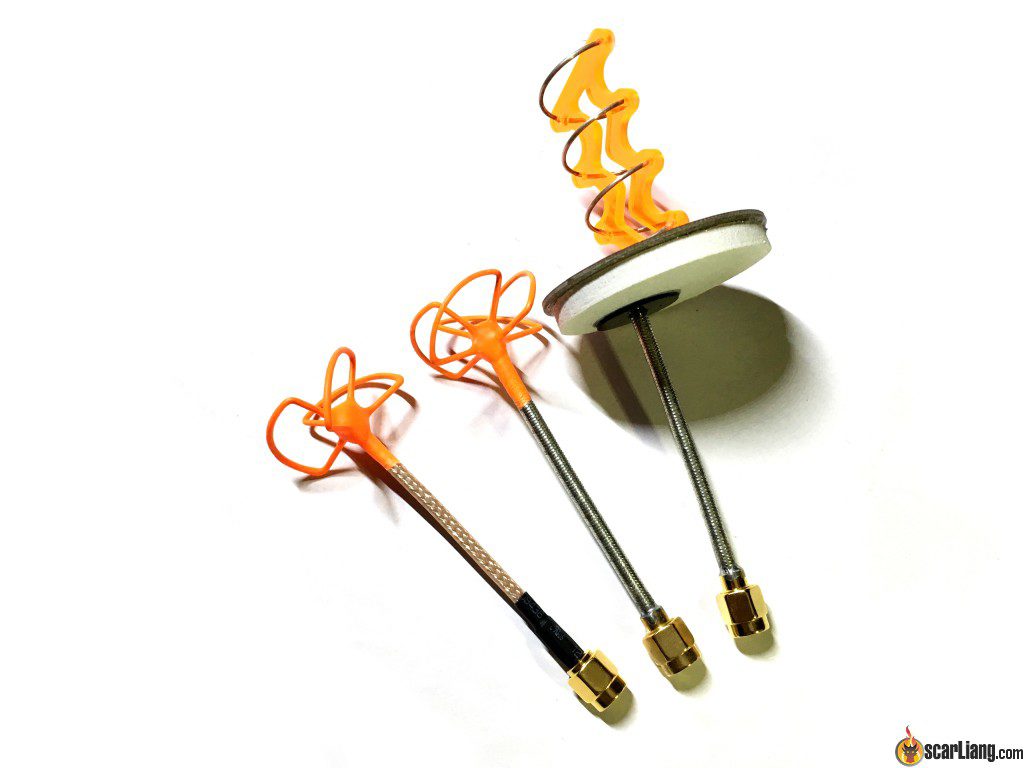
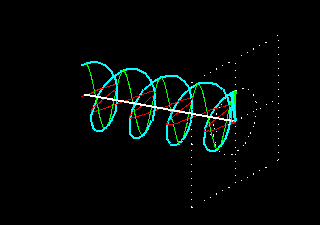
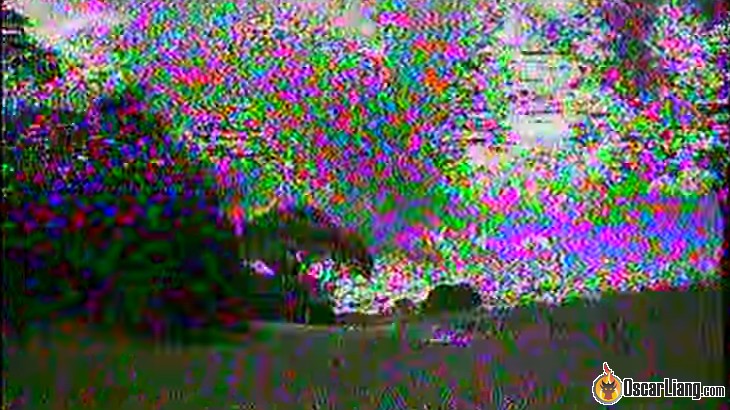
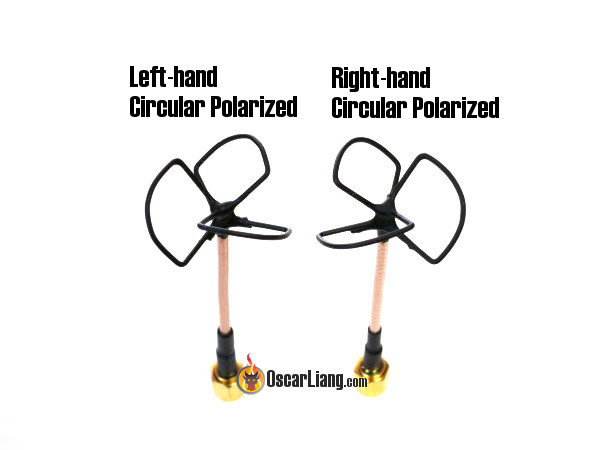
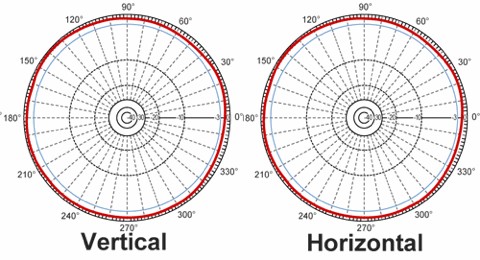
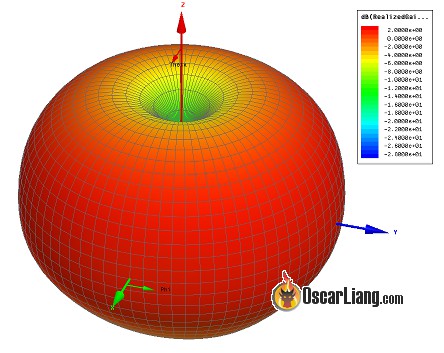
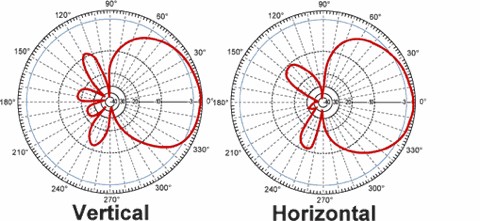
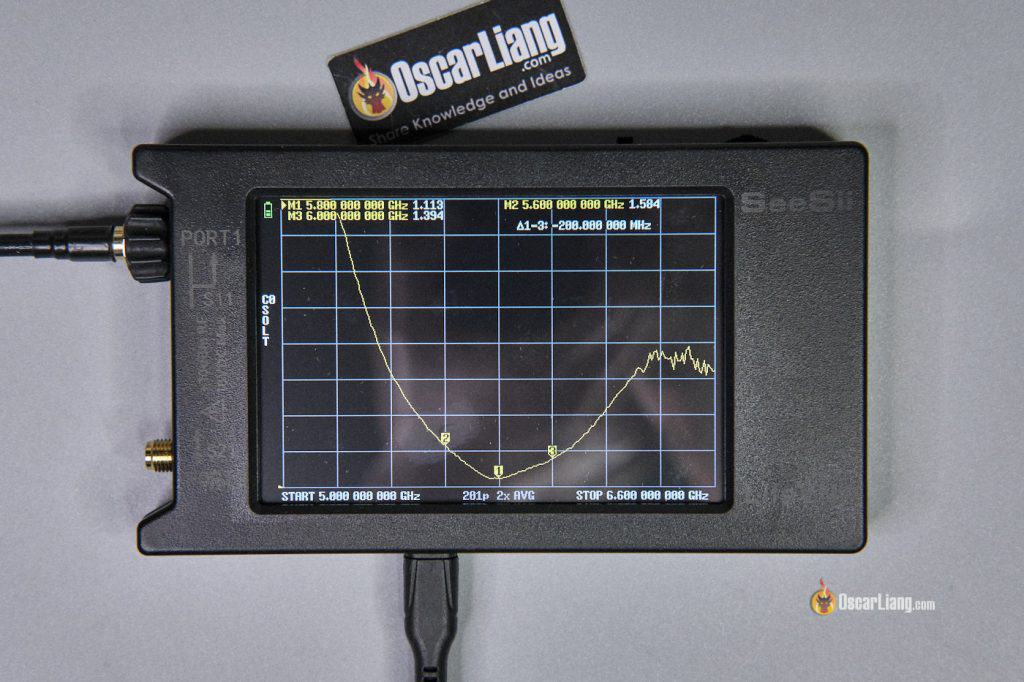

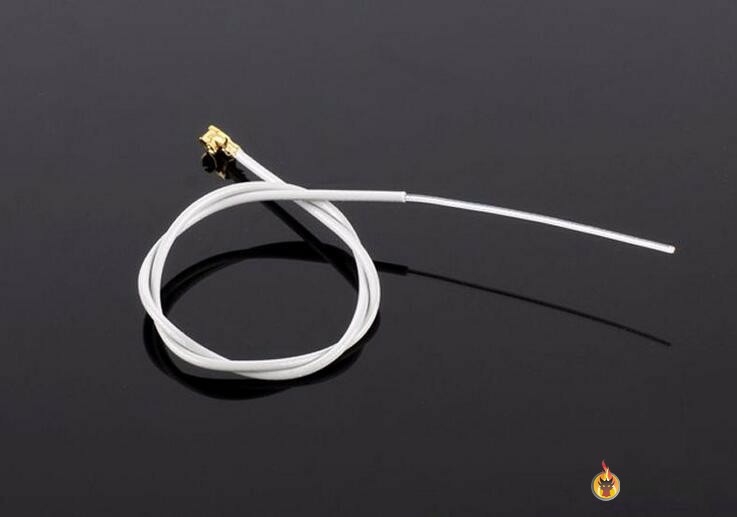
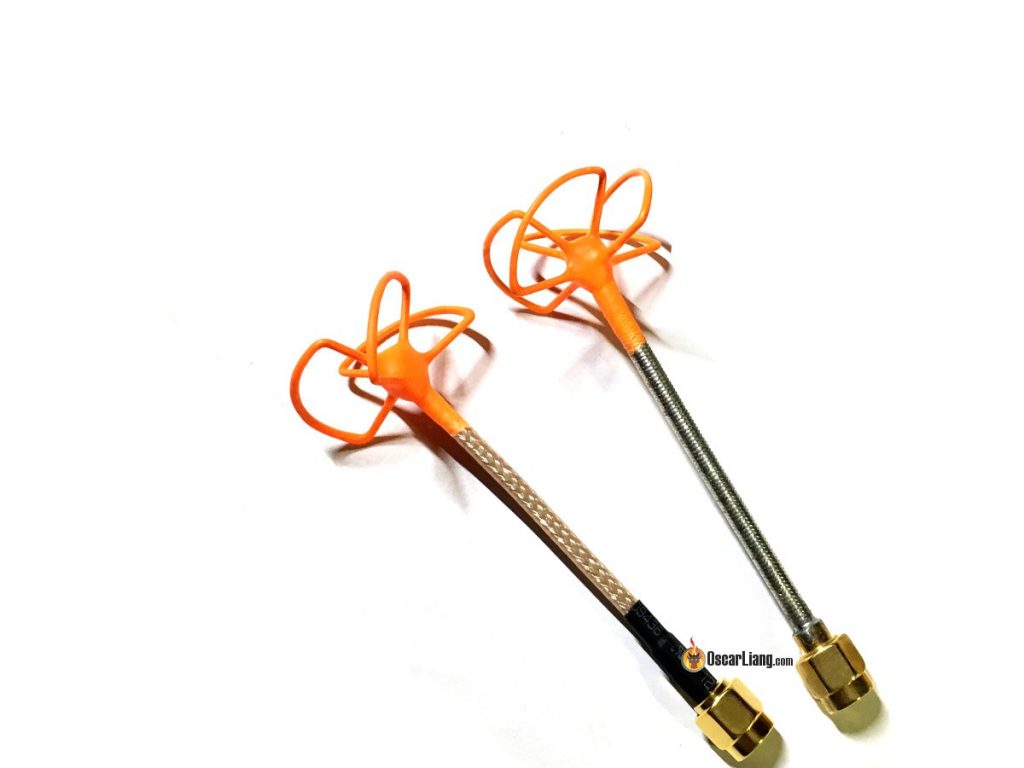



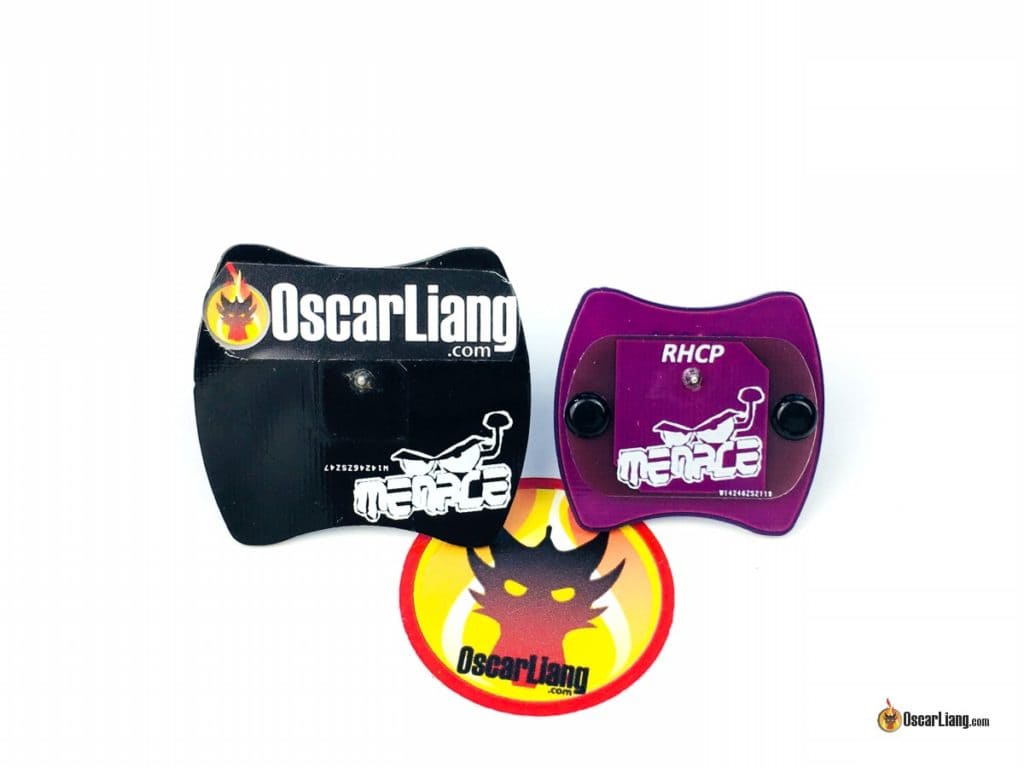




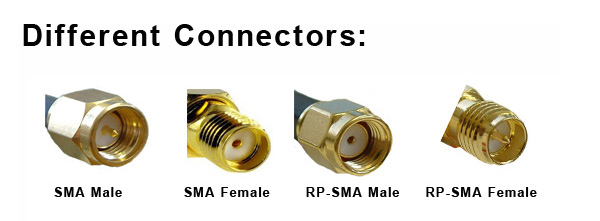
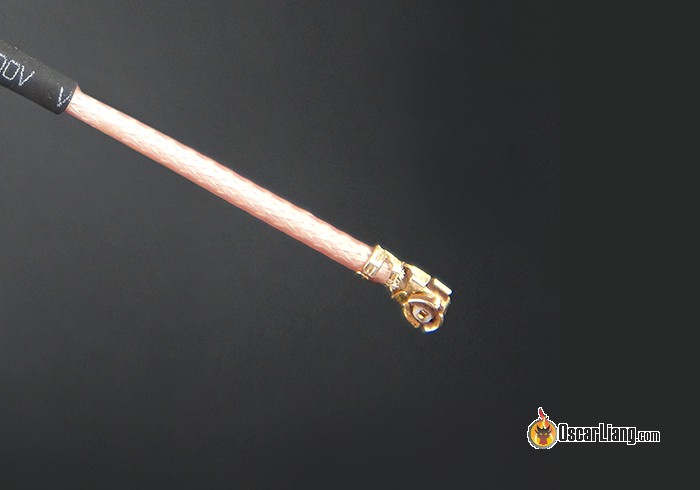

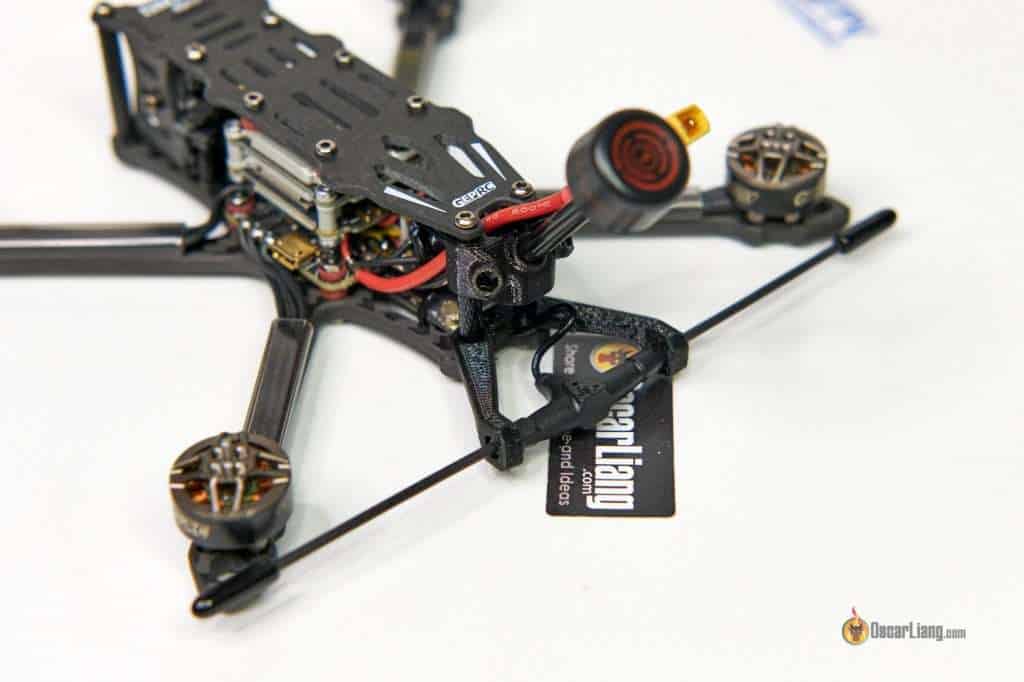



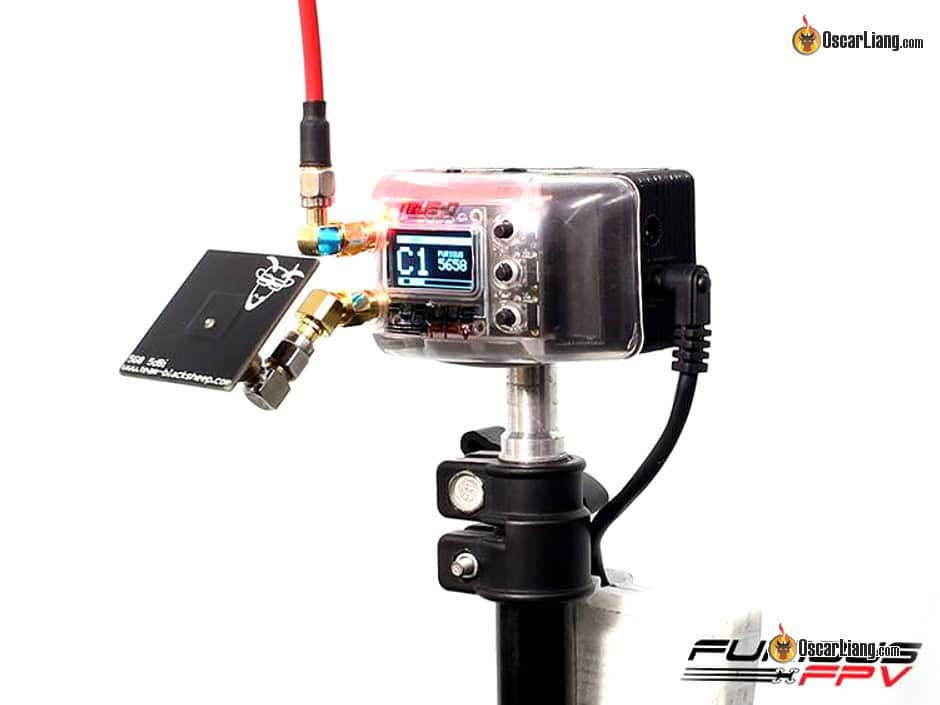
40 comments
Hello Oscar, thank you for this great article!!
You didn’t mention the long range antenna versions, which do you think are the best? I’m using an albatros sma rhcp v1 long but I’m not very happy with it… do you have any advice?
This article seems to be focused on VTX only but what about radio Receiver and Transmitter antenas? Wha type of antenas should be used there? Can I use also Clover Leaf antena there? Also there is no detailed mention about antena impedance. From what I know, every antena type has different impedance and it cannot be jsut mixed but I would like to know more about that. Like what happens when I use ELRS diversity receiver with different types of antena?
Hi Oscar. Could you please help me to sort out with issue I faced. Bought TrueRC X²-AIR Combo Kit for my DJI V2. But signal range did not change at all. In addition, after a 5-minute flight, the signal delay increases to 80 ms and does not change even when the drone is 5 meters away from the goggles. Power 700mW. What could be the problem? Thanks.
Can you change back to the original antenna and see if the issue goes away? If the problem persists with those X-Air, maybe contact seller and see if those are faulty.
Hello Oscar. I wanna upgrade the antenna for my walksnail golggles.
My goal is: penetration in every inch in city (low attitude flying). Fly through a lot of building around me ( low attitude) but very far, long distance
I found x2 air review very good penetration from youtube, but on paper it should not have good penetration from the side (left and right). But like “Let fly rc” review, you can go to every where around you with x2 air. Did you test this product?
Pretty sure X-air antenna is a Crosshair antenna, as its name reflects
I have some antennas that with a multi meter show conductivity between the signal wire and ground plane. Is this normal, would conductivity mean the antenna is bad? New stubby Lumenier AXII 2 vs TrueRC OPC long. Is there any tests that you can do with a multi meter to check for defects?
Very good/thorough explanation of complex RF principles in easy to understand terms.
Man I went down the rabbit hole with 2.4ghz antennaes. In your opinion why are directional antennaes(helical specifically) for 2.4ghz not more common(even exist) compared to 5.8ghz? Is it because range isn’t an issue and directional could violate FCC rules very easily? Where as with 5.8ghz you’d stretch to even get to parity with 2.4ghz even with helicals/patch
First u can unlock the tinyhawk 2 vtx from 25mw to 200mw that will make a huge difference there. I use fat shark scouts with a vas crosshair. In my opinion the vas crosshair is one other best VRX antennas u can buy at $35 (vas super cannon is fantastic too at $25, it’s great as an omni up close but at beyond 100yards it’s very very directional like lazer beam). I can fly far, farther than tinyhawk batteries allow. I can sit in my garage and fly every single inch of my 1800sqft house, bathrooms, showers it works amazingly well in and outside the house, I can fly from in the garage out the window and over the roof to opposite end of house with no loss… After several crashes the linear antenna broke off, I took an old mmcx axxii 2 completely removed both halves of the plastic cover to drop most the weight, glued down the elements that are under said cap (it will make since once u pop the plastic cap off) then soldered it onto the board where the other was… I can now run the lower power setting and get the same range, more battery, worthy upgrade.
Wondering if adding a piece of wire to the coax part of my vas ion pro with zip ties and elec tape is going to effect performance. The wire was a piece of uncoated ferrous hanger wire probably steel.
I have a TinyHawk 2 and I use DJI Racing Edition goggles and a Taranis QX7 RC. I get very poor reception when flying inside my house. The TinyHawk 2 just has a little wire antenna sticking out of it. I am just using the DJI goggle antennas that come with it. Can you suggest a better antenna to use? Thanks
First u can unlock the tinyhawk 2 vtx from 25mw to 200mw that will make a huge difference there. I use fat shark scouts with a vas crosshair on rx which in my opinion is one other best RC antennas u can buy at under $40. I can fly far, farther than tinyhawk batteries allow… after several crashes the linear antenna broke off, I an old axxii 2 completely removed both halves of the plastic cover, glued down the elements that are under said cap (it will make since once u pop the plastic cap off) then soldered it onto the board where the other was… I can now run the lower power setting and get the same range, more battery, worthy upgrade.
First u can unlock the tinyhawk 2 vtx from 25mw to 200mw that will make a huge difference there. I use fat shark scouts with a vas crosshair. In my opinion the vas crosshair is one other best VRX antennas u can buy at $35 (vas super cannon is fantastic too at $25, it’s great as an omni up close but at beyond 100yards it’s very very directional like lazer beam). I can fly far, farther than tinyhawk batteries allow. I can sit in my garage and fly every single inch of my 1800sqft house, bathrooms, showers it works amazingly well in and outside the house, I can fly from in the garage out the window and over the roof to opposite end of house with no loss… After several crashes the linear antenna broke off, I took an old mmcx axxii 2 completely removed both halves of the plastic cover to drop most the weight, glued down the elements that are under said cap (it will make since once u pop the plastic cap off) then soldered it onto the board where the other was… I can now run the lower power setting and get the same range, more battery, worthy upgrade.
Noob here…… so if I have 2 rhcp (1 circular patch antenna and 1 long range circular antenna) and 2 lhcp ( 1 circular patch antenna and 1 omni circular antenna), and a linear dipole on the mini quad will the help or make it worse for video reception, video quality and distance?
We’ve all been there. (however I see I’m 4 years late answering you so I guess you’ve found out by now, but in case anyone else has the same question):
Using a circularly polarized antenna (either RHCP or LHCP) on your quadcopter and a matching antenna (same polarization) on your receiver would generally provide better video reception and quality. This is because circular polarized antennas are less susceptible to multipath interference (signals bouncing and arriving at different times).
Mixing RHCP and LHCP antennas is not ideal as they are not directly compatible. If you transmit on RHCP and try to receive on LHCP (or vice versa), you’ll experience a significant loss in signal strength.
If you’re using a linear dipole antenna on your mini quad, you’ll likely experience a decrease in signal strength and potentially in video quality as well. I write about this stuff on rcdroneguys.com.
In the end, I’d recommend using a matched set of long-range circular polarized antennas, either RHCP or LHCP if you are looking for long-range video transmission. That would be my approach. Hope this helps!
Check out the VAS Ion v2 – higher gain than the lollipop v2, but with a 0.94 axial ratio instead of tautalogous <1 axial ratio (which ends up working with a dipole receiver as well as CP receiver). Great overview!
My vrx have 2 antenna output. One cloverleaf and one polarized. Or both of them cloverleaf. Which is better? If polarized better which polarized is better?
i think you misunderstood polarized antennas, please join forum for discussion and help: http://www.intofpv.com
What about TripleFeed Patch antennas?
Hello oscar i love your articles my question is in this one you mentioned that when a signal bounces it changes say from rhcp to lhcp so i was wondering if it would work if i used my furious fpv true d with both a lhcp and a rhcp pagoda antenna with a rhcp pagoda antenna on my quad do you think this would help with signal
You saved me! My teen built a 5″ quad using a YouTube build list. He needed to replace his VTX antenna because it broke. He did a lot of work communicating with forums to figure out the recommended replacement parts. Your article taught me everything I needed to know as a parent to feel confident clicking the “submit order” button, knowing that we had the right parts and wouldn’t end up spending more money next week because we chose the wrong stuff. We figured out what to upgrade and what he had that would already work. And bonus–I had a lot of fun learning about antennas and feel more informed and involved. He decided to upgrade his VTX to CP Lumenier AXII Stubby Pagoda and for his VRX, we bought adapters to use for a pair of Aomway Cloverleafs he already had, but wasn’t using. He had previously been using dipole on his VTX, so this was a good upgrade using something he already had. Nothing else was as overall informative as your article. Thanks so much!!
Thanks for the great feedback Virginia!
Hi Oscar, thanks for writing this post, I refer to it quite a lot. Do I understand you correctly, that it is better to use a lineair and a circulair antenna than using a lineair antenna on both ends? I make use of the latter and never experienced really unflyable situations. I mean during an indoor flight event, when the building is constructed out of mainly steel and iron elements I do experience bad signal at the far back of the building. But, like I said, not unflyable (25mW, 4 pilots at the same time).
For mini quads, yes :) Because we roll and flip all the time it’s hard to keep both antennas aligned properly at all times.
If you fly with others, and indoor, definitely go for CP antennas on both ends.
Hola Oscar, tengo un hubsan H501SS y por lo que estoy viendo las de polarización circular dan mejor cobertura pero en menor rango. No quiero hacer FPV y me gusta mas grabar e irme lo mas lejos que pueda. Entiendo que debería cogerme unas antenas direccionales. Cuales me recomiendas o que consejos me das para tener mayor rango de distancia con buen FPV?
Gracias y enhorabuena por el artículo.
People doesn’t know every language in the world.
You are in a public forum and you should stick to the language in use here.
This is called netiquette.
Hello !
Great article. really interesting.
But has a noob in the fpv world (just one year for me in this hobby. I only own some little 90 or smaller quad. I come slowly to the 3″.
I have Dipole (and linear if i understand) antennas on my quads. I use fatshark domV2 with furiousfpv V3,5 module, and a linear bandicoot patch, and RHCP pagoda.
So, my question is : Did I must change the RHCP pagoda ?
For a better reception (mostly indoor use), did i must use a linear antenna like the stock fatshark ?
Many thanks. Great Site. Great bible of fpv stuff and drone .
No, i think it’s fine, save your money and stick with this setup, unless you run into problem where you need better signal.
For indoor, i think circular polarized antennas are much better to avoid multipath.
Hi Oscar,
Thank you for writing one of the most detailed exlpanation on FPV antenas out there!
One question is almost never answered on the internet: when you already own a market drone, like the Hubsan H501S, in which you cannot easily replace antennas, what antennas to buy for my goggles and controller?
The controller is the Pro version, with SMA plugs.
The goggles are Eachine EV100, with two RP-SMA plugs but only one receiver (no true diversity).
I want to improve the controller range (a good 2.4Ghz dipole I guess?) and to get the best video out of my goggles.
Thank you for your time :)
Used the Furious FPV Cloverleaf uFl antenna on my 3in quad and TrampHV….totally destroyed after a few crashes. First the lobes bent and the epoxy broke at some locations. Trying to bend it back to the original shape the solder joint cracked. I removed as much epoxy as possible and resoldered the lobes. When soldering one lobe, the opposite one detached. When all lobes were reattached (luckily!) I applied a big blob of epoxy glue. The assy was then quite stronger. Next crash, the cloverleaf was strong enough to resist, but the uFl connector not! It is too small for me to think about a possible repair. This is a scrap antenna.
Conclusion, very light antenna and quite efficient, but do not crash it.
yup they used that same antenna on the Moskito70 micro quad as well and I didn’t have much luck with the exposed construciton. And they didn’t listen to my suggestion and carried on with the design, what can I say.
For durable Aomway snip away plastic support and submerge center of cloverleaf in a big glob of hot glue. Much tougher than stock antenna but adds 2 grams.
Hi Oscar. Quick question. Can you use Left hand side VRX antenna with right hand side VTX antenna?
You can, but shouldn’t. The whole idea (and advantge) of circular polarisation is the rejection of the “opposite” polarisation by CP antenna. Reflected signal changes polarisation – and we don’t want to receive reflected signal as it causes the multipathing problems.
Oscar, check your antenna polarisation of your VTX and VRX. Whey are wrong.
On the foto where your quad is lying on your backpack / grass, your VTX antenna on your quad is an LEFT polarized and on your Fatshark the VRX Omniantenna is a RIGHT polarized :P
Well spotted Mr pit :)
I wasn’t going to mention it but since you asked I have put a caption under that picture to explain why I did it :)
The latest Aomways CP now comes with plastic casing
thanks :)
we are featuring the older version because it’s proven to work and recommended many users.
We will look into the new version later on :)
The Aomway with the cover is the same antenna as the older Aomway without the cover, just with a cover that can be attached.
You can also buy the cover seprately.